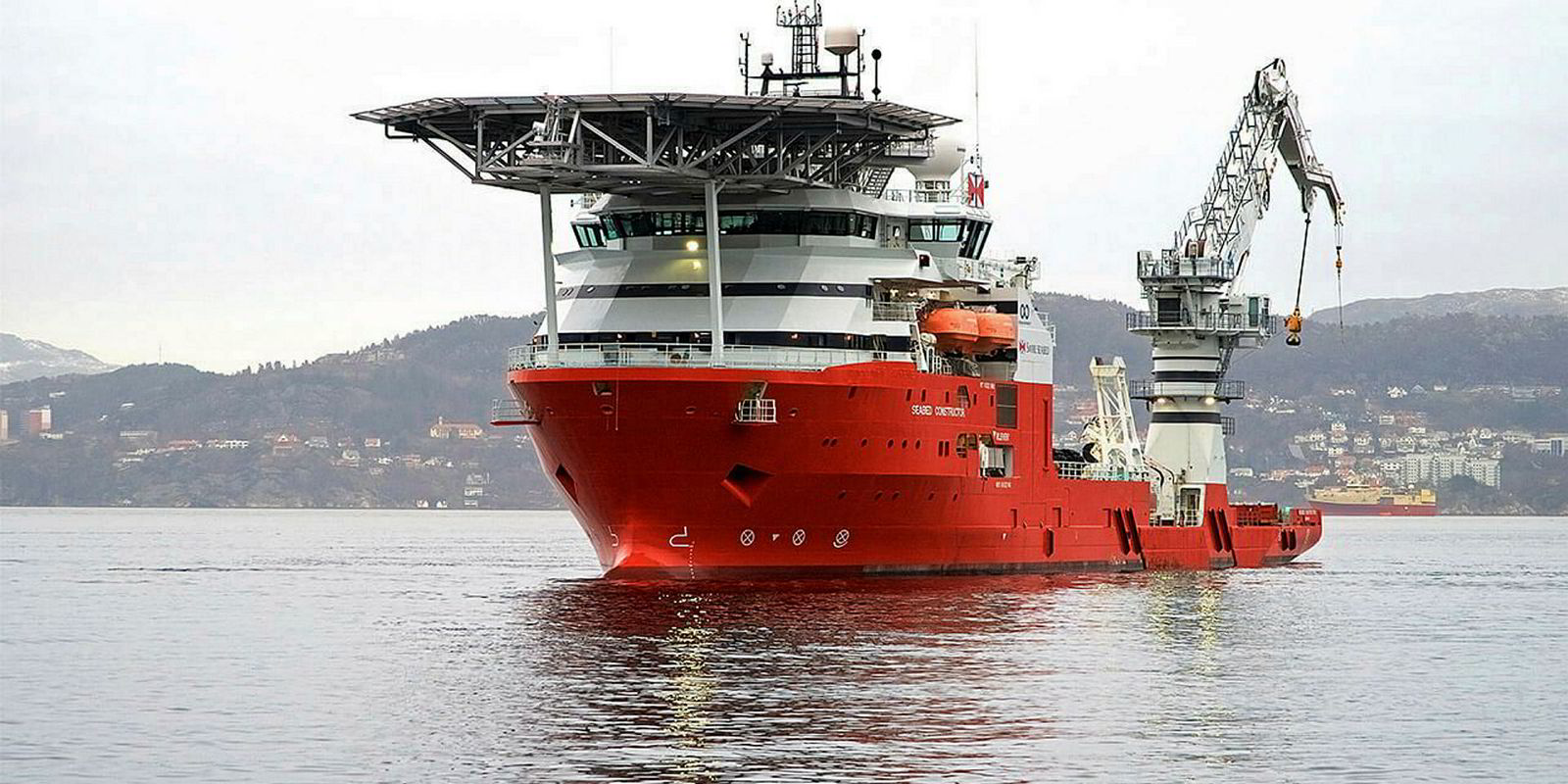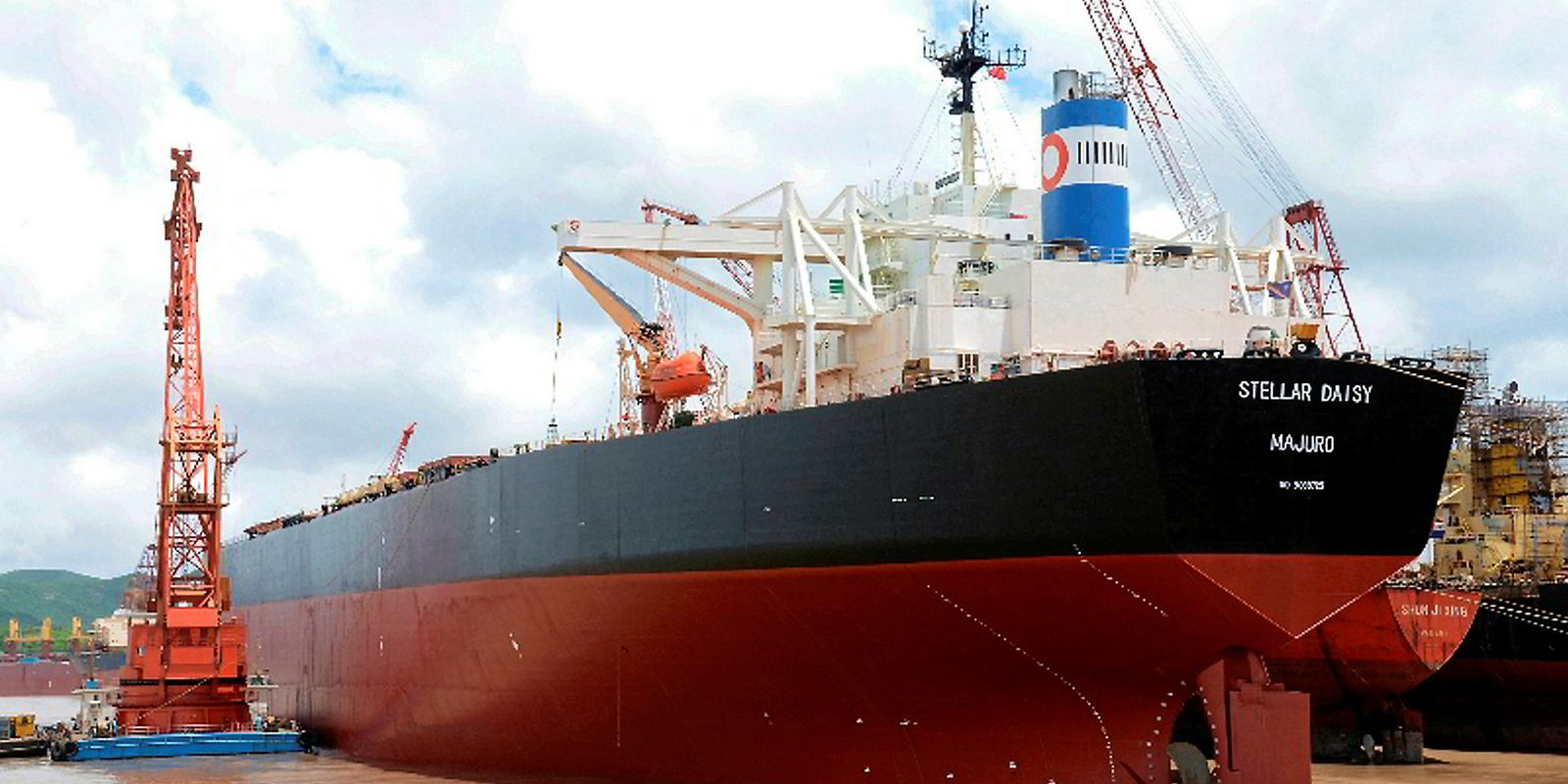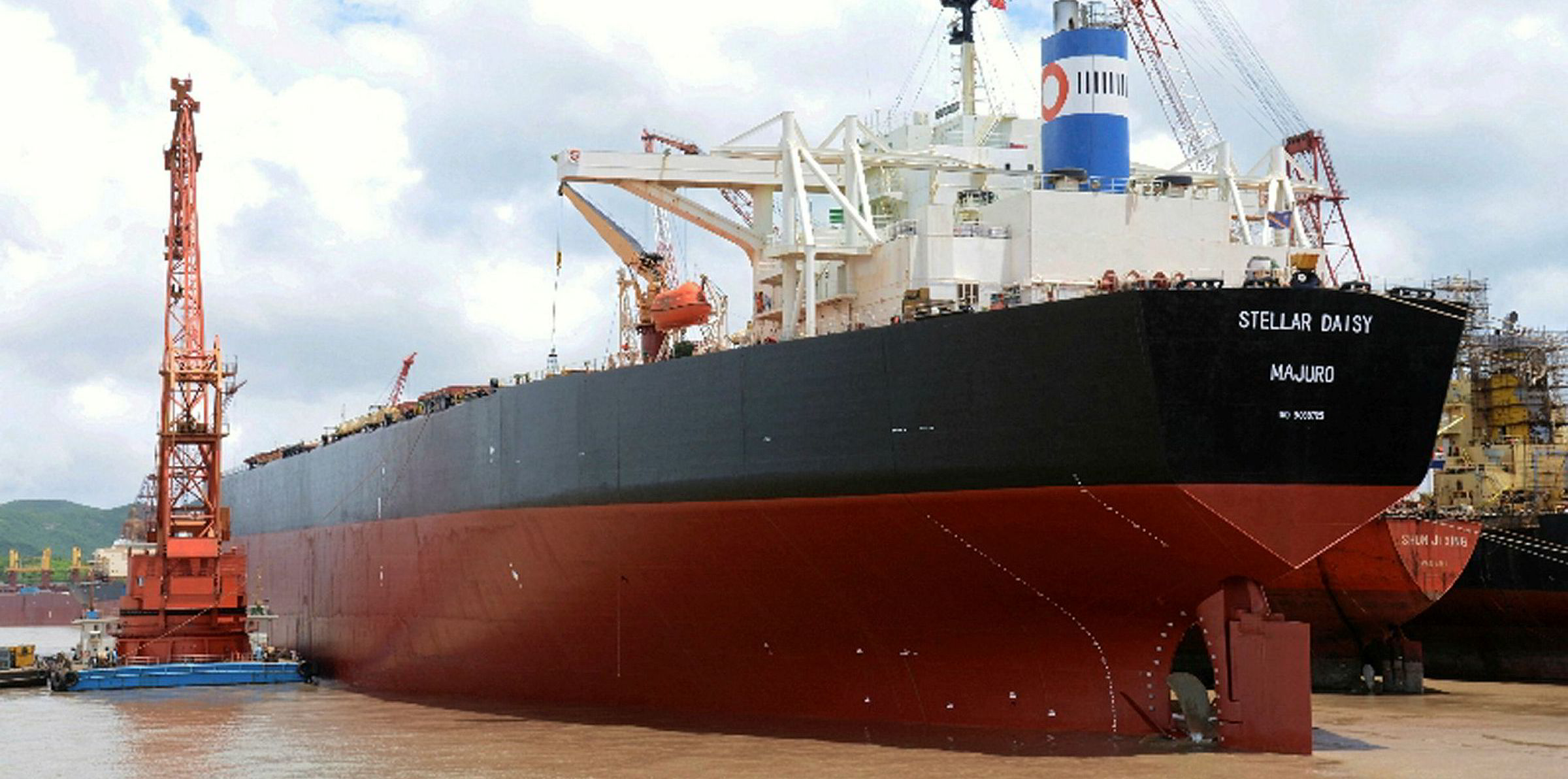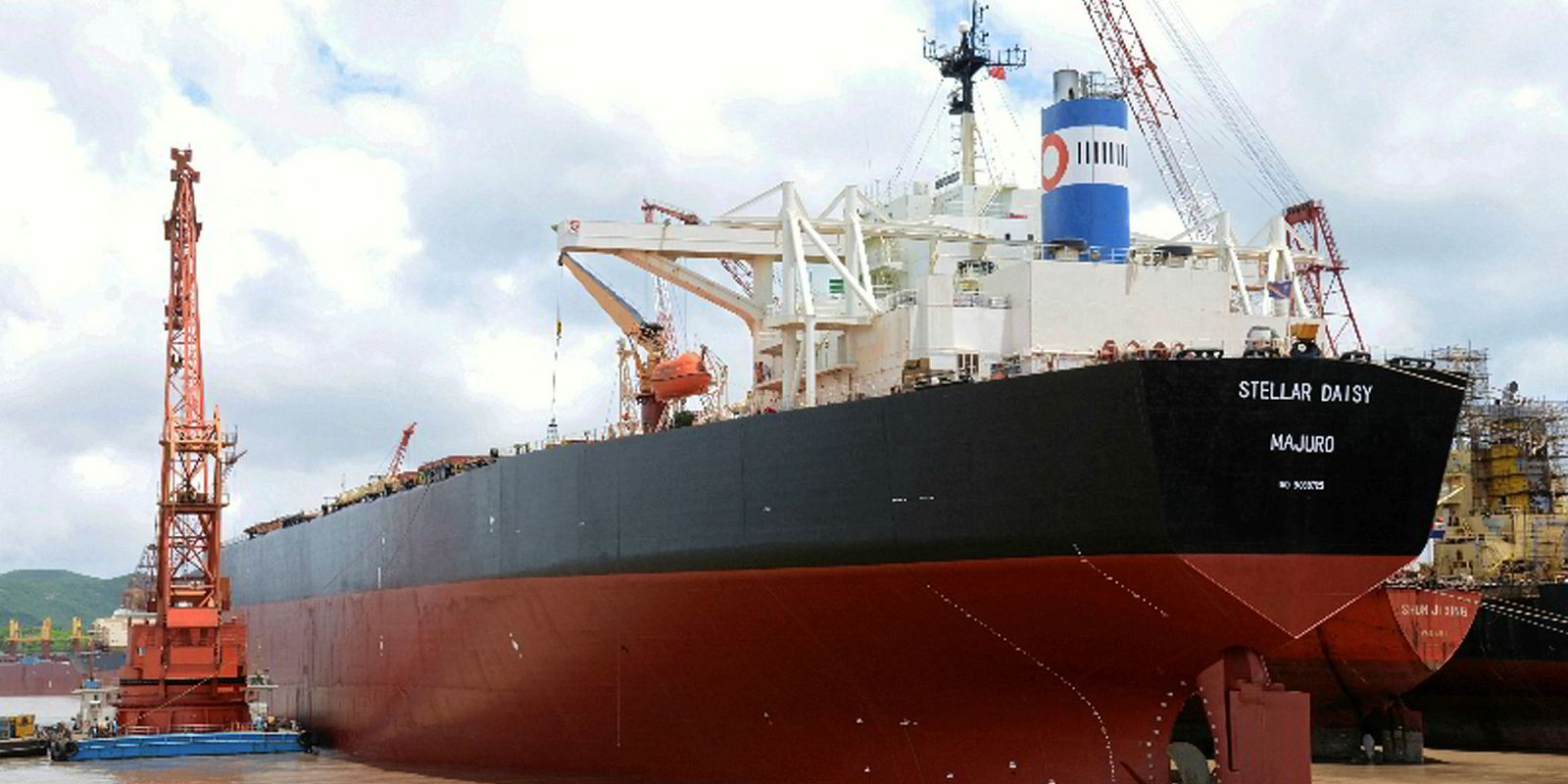The loss of the VLOC Stellar Daisy was most likely due to a “catastrophic structural failure of the ship’s hull”, a long-awaited report by the ship’s flag state has concurred.
The Marshall Islands said the failure “probably began” in No 2 port water ballast tank, according to extracts of the report released more than two years after the disaster.
The Polaris Shipping-owned VLOC sank on 31 March 2017 while en route from Ilha Guaiba, Brazil, to Qingdao with the loss of 22 lives.
It went down in the South Atlantic Ocean around 1,700 nautical miles from Uruguay. Two crew members were rescued
The dry bulk industry has been looking to the Marshall Islands report for clues as to the structural safety of more than 50 VLOCs currently trading which, like the Stellar Daisy, had been converted from single hull VLCCs in the 2000s.
There is a liability question over whether the catastrophic loss could have been avoided by more robust flag state and classification society inspections and surveys.
'A combination of factors'
“The structural failure was most likely a result of a combination of factors, including the strength of the ship’s structure being compromised over time due to material fatigue, corrosion, unidentified structural defects, multi-port loading and the forces imposed on the hull as a result of conditions Stellar Daisy encountered between 29 [and] 31 March 2017,” the report said.
The Marshall Islands said that the fatigue cracking was “probably undetectable by visual inspection prior to the sinking”, a stance backed-up by the ship’s class society at the time the Korean Register (KR).
However, the report has called into question some actions taken by KR covering areas such as concerns over material fatigue, a lack of failure analysis and a lack of communication with the flag state about such issues.
On Sunday KR issued a statement in which it says certain aspects of the report that are directed specifically at KR require “further explanation”.
The report said that KR’s review and approval of the conversion design in 2008 was based on the assumption that all of the scantlings, including those from when the ship was constructed as a VLCC in 1993, were “as original and did not take into account material fatigue”.

It added that the “basis for this assumption” was that the finite element analysis, which was conducted in accordance with the requirements of the KR Rules for Steel Ships, took into consideration allowable stress, corrosion, and stresses due to local notch effect. The practice is described as “common” for many IACS classification societies.
In response, KR said an independent review conducted by Bruce S Rosenblatt & Associates — the third-party hired by the flag state to technically review the conversion process — confirmed that KR’s structural analysis was “conducted properly”.
The report also claims that although KR did conduct a failure analysis of the damage to the transverse bulkhead at frame No. 65, it “did not conduct a failure analysis” after an extensive number of cracks were identified and repaired when the ship was in drydock in 2011, within two years after the conversion was completed.
As a result, the flag state said that the potential weaknesses with design details were not identified.
“This is an indication that KR’s monitoring and assessment of the ship’s structural integrity was not as effective as it might have been,” it added.
KR responded by saying that a failure analysis is carried out at the “discretion of the attending surveyor” when, in their assessment, a defect or damage is “out of the ordinary” and further scrutiny is required.
“The report correctly states that a failure analysis of the damage to the transverse bulkhead at frame No. 65 was conducted as it was determined by the attending surveyor to be 'out of the ordinary' and similar damage was not found in other parts of the ship,” said KR.
“However, the cracks/defects identified and repaired at the time of drydocking in 2011 were determined to be those typically found on board ships of a similar age, ” the classification said. The Stellar Daisy was 18 years old in 2011.
“Based on this observation, the attending surveyor determined that the cracks/defects were not 'out of the ordinary' and as long as proper repairs were performed, a failure analysis was not needed.”
The report also claims that KR “did not inform” the Marshal Islands of the damage to frame No. 65 in 2016 given that it was authorised to serve as an RO on behalf of the administrator.
“The 2016 RO Agreement between the Administrator and KR requires that KR immediately inform the administrator of, among other things, 'any dangerous occurrences, accidents, machinery or structural breakdowns, or failures that they are aware of on a vessel',” the report claims.
In response, KR said that a failure analysis was carried out to assess the structural integrity of damage to the transverse bulkhead at frame No. 65, the result of which showed that there was “no area of concern and proper repairs were undertaken to renew the damaged part to its original condition”.
KR said it also examined the surrounding bulkheads of Stellar Daisy as well as bulkheads on 29 other converted VLOCs, some 230 bulkheads in total, to determine if there were any similar defects and that the result of this extensive investigation was that there were “no areas of concern”.
The classification society added that as a thorough inspection and comprehensive repairs were undertaken, KR determined that there was “no dangerous structural issue” that warranted reporting to the flag administration.
However, KR said it was “mindful of the recommendations in the report” and that it plans to review its reporting procedures to avoid any future misunderstandings.






